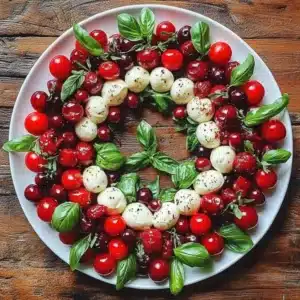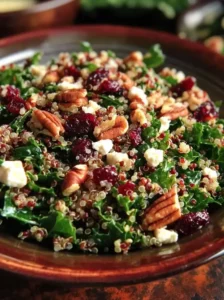Creamy French Onion Soup in Sourdough Bread Bowls: A Delicious Twist on a Classic Recipe
Imagine sinking a spoon into a warm, golden-brown sourdough bread bowl filled with the rich and savory essence of a creamy French onion soup. This delightful recipe combines the traditional flavors of French onion soup with a luscious creamy finish, all served in an inviting sourdough vessel that absorbs the deliciousness with every bite. As you enjoy this comforting dish, you’ll be transported to a cozy French bistro, where the aromas of caramelized onions and fresh bread linger in the air, providing an unforgettable sensory experience.
This creamy French onion soup recipe reinvents the classic version while staying true to its essence. The combination of caramelized onions, a touch of cream, and savory broth creates a velvety texture that is both indulgent and satisfying. Capping it all off, the sourdough bread bowls add a rustic charm and an interactive element to this timeless dish. Perfect for a chilly evening meal or a special gathering with loved ones, this soup is sure to warm hearts and bring smiles to faces.
The fragrant blend of onions caramelized to perfection and complemented by herbs creates a complex and delightful taste that keeps you coming back for spoonful after spoonful. With each mouthful, you experience the slightly tangy crust of the sourdough, which melds beautifully with the creamy soup, creating a delightful contrast of flavors and textures. Whether you’re a long-time fan of French onion soup or a newcomer to this classic, this creamy variant within a bread bowl is a must-try culinary experience.
Quick Recipe Highlights
- Flavor Profile: Experience a rich and savory base from the caramelized onions enhanced by a touch of herbs and creaminess that elevates the classic French onion soup flavors.
- Texture: Enjoy the velvety smoothness of the soup juxtaposed against the crisp yet chewy sourdough bread, which softens delectably once soaked with the soup.
- Aroma: Delight in the aromatic blend of slowly caramelized onions, fresh thyme, and the subtle sweetness of toasted sourdough bread, creating an enticing sensory experience.
- Visual Appeal: The soup’s golden hue and the rustic charm of the sourdough bread bowl offer a visually pleasing presentation fit for any dinner table.
- Skill Level Needed: This recipe requires intermediate cooking skills, particularly in properly caramelizing onions and hollowing out sourdough bread bowls without breaking them.
- Special Equipment: A heavy-bottomed pot for caramelizing onions, a sharp bread knife for creating the bowls, and a ladle for serving are essential tools for this recipe.
Recipe Overview
- Difficulty Level: While the steps are straightforward, achieving the perfect caramelization of onions involves patience and attention, marking this recipe at a medium skill level.
- Category: This dish serves as an elegant appetizer or a comforting main course, suitable for family meals or special occasions.
- Cuisine: Rooted in French culinary tradition, this recipe showcases classic techniques with a modern twist, highlighting influences of rustic bistro dining.
- Cost: The primary ingredients, including onions, broth, and sourdough, are cost-effective, making this an affordable yet indulgent recipe choice.
- Season: Ideal for autumn and winter months, this soup offers a comforting warmth perfect for chilly days or holiday gatherings.
- Occasion: Suitable for a cozy dinner at home or as a starter at a festive dinner party, this dish brings warmth and hospitality to any occasion.
Why You’ll Love This Recipe
Indulging in this creamy French onion soup in sourdough bread bowls is a treat for both taste and texture. The creamy base enriches the classic soup, creating a luscious mouthfeel complemented by the slight crunch of the bread bowl. Each spoonful offers a comforting warmth that is both satisfying and soul-soothing. The flavors are beautifully balanced, with the sweetness of caramelized onions harmonizing with the richness of the stock and the subtle tang of the sourdough.
The convenience of this recipe lies in its simplicity. With minimal ingredients and straightforward steps, you can create a dish that has complex flavors akin to dining at a gourmet restaurant. This recipe is perfect for advance preparation, as the soup can be made ahead of time and reheated, reserving the bread bowls for the final presentation, making it ideal for both busy weeknights and relaxed entertaining.
Nutritionally, this dish offers an array of benefits. Onions provide antioxidants, vitamins, and fiber, contributing to overall wellness, while the sourdough offers a source of healthy carbohydrates and minerals. Adjustments can also be easily made to suit dietary needs, such as using a low-sodium broth or a dairy-free cream substitute to tailor the recipe to specific nutritional preferences.
Serving this soup in a hollowed-out sourdough bowl not only promises to be a conversation starter but also enhances the dining experience. The interactive element of tearing off pieces of the bread to dip into the soup creates a social dining atmosphere, perfect for family-style serving or intimate dinners. It’s a rich dish that fosters bonding over good food and shared enjoyment.
Cost-effectiveness is a bonus with this recipe. Using staple ingredients like onions and bread can keep the costs low without compromising flavor or satisfaction. Even with higher-quality artisanal sourdough, the dish remains economical, especially when considering the gourmet appeal it provides. Overall, this recipe for creamy French onion soup in sourdough bread bowls is both a culinary delight and a practical option for a variety of dining needs.
Historical Background and Cultural Significance
The origins of French onion soup date back to the Roman times; however, the modern version we enjoy today is distinctly French in nature, emerging as a staple in the culinary traditions of France. Originating in the 18th century, this humble soup was once considered a dish for commoners, making use of onions, which were plentiful and inexpensive, and a simple meat broth. Its elegant transformation into a cherished dish occurred in the famed French bistros of Paris.
French onion soup holds cultural importance as it represents the ingenuity of French cuisine—where simple ingredients are elevated through technique and time-honored cooking methods. Its rich history showcases the French ability to create sophistication and flavor from modest beginnings, cementing its place in both home cooking and high-end dining settings across the globe.
With its rise in popularity, French onion soup has undergone numerous evolutions. The inclusion of a creamy base is a contemporary twist, appealing to those seeking a richer, more decadent experience. Incorporating elements like sourdough bread bowls reflects a global culinary trend towards interactive and experience-driven dining, combining the classic with the innovative.
Regionally, variations of onion soup exist, each adding unique local ingredients or techniques. From adding different cheeses for gratinéed toppings to introducing a variety of herbs or employing local breads, these adaptations highlight the versatility and enduring appeal of this storied dish in diverse cultures and cuisines.
Ingredient Deep Dive
– **Onions**: Onions have been a cornerstone of culinary traditions due to their versatility and rich flavor profile. Historically, they were revered for their medicinal properties and ease of cultivation. Nutritionally, onions are a powerhouse of antioxidants, vitamins, and dietary fiber, contributing to overall health and boosting immunity.
When selecting onions for this soup, look for firm bulbs with a uniform skin and no signs of sprouting. Store them in a cool, dark place with good air circulation. If you’re in a pinch, sweet onions or even shallots can substitute, but keep in mind these may alter the traditional flavor slightly.
– **Sourdough Bread**: Sourdough’s deep roots trace back to ancient cultures, prized for its natural fermentation process that enhances both flavor and digestive health. Its characteristic tang and chewy texture make it ideal for recipes requiring robust flavors and textures, like this soup.
Choose sourdough loaves with a thick crust and a soft interior. Store bread at room temperature and consider freezing any surplus to extend its life. Artisan breads from local bakers often offer the best quality and flavor. Gluten-free sourdough options exist for those with specific dietary needs, ensuring everyone can enjoy this delicious presentation.
Common Mistakes to Avoid
- Avoid rushing the caramelization process: Properly caramelized onions should be a deep, golden-brown, and rushing can lead to uneven cooking and burnt onions.
- Do not overcrowd the pot: Caramelizing too many onions at once can cause them to steam instead of caramelizing; work in batches if necessary.
- Be cautious with salt: Remember to taste as you go, especially when using broth; too much salt can overwhelm the delicate sweetness of the caramelized onions.
- Properly hollow the bread bowls: Avoid cutting too deep or thin—ensuring sturdy walls to hold the soup, preventing leaks and spills.
- Use fresh ingredients: Fresh herbs and broth enhance flavors significantly compared to dried aromatics or stock cubes.
- Mind the cream addition: Incorporate cream slowly to prevent curdling, especially if the soup is very hot.
- Check bowl size: Ensure bread bowls are large enough for ample soup portions but not overly capacious to maintain integrity during consumption.
- Ensure even soup heating: Mixing the soup thoroughly prevents layering and ensures consistent flavor delivery in each spoonful.
Essential Techniques
– **Onion Caramelization**: The soul of this recipe lies in patiently caramelizing onions. Mastery involves slow cooking over medium heat, stirring often until a deep golden color is achieved. This builds a complex sweetness crucial for the soup’s flavor. Overcooked onions will taste bitter; watch for a soft texture and uniform color as your success gauge.
– **Bread Bowl Preparation**: Hollowing the sourdough loaf requires precision. Use a sharp bread knife to carve out the top, then carefully remove the interior, leaving a sturdy crust. This ensures the bowl maintains its shape and doesn’t leak. Practicing on a smaller loaf can help gain confidence in mastering this step.
Pro Tips for Perfect Creamy French Onion Soup in Sourdough Bread Bowls
– Choose high-quality, flavorful broth to serve as a robust base, enhancing the depth of the soup.
– For additional creaminess, blend half of the caramelized onions into the broth before adding the cream.
– Experiment with various types of cheese that pair well with French onion soup when creating gratinéed toppings.
– Toast the interior of the sourdough bowl slightly to create a barrier that prevents sogginess.
– Garnish with fresh thyme or parsley for a burst of color and flavor before serving.
– Maintain the soup at a simmer, preventing it from boiling excessively, which can break down the texture.
Variations and Adaptations
– **Regional variations**: French onion soup varies significantly; explore using Parmesan in place of Gruyère for an Italian twist or incorporate local alcohols in the broth to infuse distinctive regional flavors.
– **Seasonal adaptations**: During spring, introduce fresh chives for a vibrant taste, while autumn harvests can allow for spiced renditions incorporating nutmeg or cinnamon.
– **Dietary modifications**: A dairy-free alternative can replace cream with coconut milk or almond cream, providing a similar velvety texture without changing the essence.
– **Flavor variations**: Infuse the broth with a splash of white wine for acidity or add a touch of balsamic vinegar for subtle sweetness.
– **Texture modifications**: Add texture by incorporating sautéed mushrooms or crispy bacon, providing a contrast against the creamy backdrop.
– **Presentation alternatives**: For a more modern presentation, serve the soup in elegant glass bowls and accompany with petite sourdough toasts.
Serving and Presentation Guide
– **Plating techniques**: Elevate presentation by artfully arranging garnishes or drizzling the soup with swirls of cream for an eye-catching finish.
– **Garnishing ideas**: Use delicate sprigs of fresh herbs or a sprinkle of crispy fried onions to enhance both flavor and visual appeal.
– **Traditional accompaniments**: This soup pairs beautifully with a side salad dressed in light vinaigrette to offset the rich flavors.
– **Modern serving suggestions**: Offer mini bowls at gatherings for a sophisticated appetizer option that encourages mingling.
– **Temperature considerations**: Ensure soup is hot enough for the cheese to melt and release its full flavor without scalding the tongue.
– **Portion control tips**: Consider the bread bowl volume to prevent overflowing, balancing soup quantity relative to the serving size for optimal experience.
Wine and Beverage Pairing
– **Wine pairings**: A dry white wine like Chardonnay or a light-bodied red like Pinot Noir complements the soup’s richness.
– **Non-alcoholic alternatives**: Sparkling water infused with a twist of lemon or apple cider provides a fresh counterbalance.
– **Coffee/tea pairings if applicable**: A nutty-flavored tea like oolong enhances the toasted notes of the sourdough.
– **Temperature considerations**: Serve beverages slightly chilled to refresh the palate between warm sips of soup.
– **Serving suggestions**: Present wine in delicate glasses or cider in mugs for a rustic, cozy feel that harmonizes with the soup experience.
Storage and Shelf Life
– **Storage methods**: Store any leftover soup in airtight containers in the fridge to retain its freshness.
– **Temperature requirements**: Refrigerated soup should be kept chilled to prevent spoilage; consume within 3 days for optimal flavor.
– **Container recommendations**: Glass or ceramic containers are preferable to avoid any plastic taste seeping into the soup.
– **Signs of spoilage**: Off smells or altered textures signify soup that is no longer fit for consumption.
– **Reheating instructions**: Reheat gently on the stove over low heat, stirring occasionally to maintain a homogenous blend.
– **Freezing guidelines**: While freezing is possible, note that the cream may separate upon thawing; consider freezing before adding cream and incorporate fresh upon reheating.
Make Ahead Strategies
– **Prep timeline**: Onions can be caramelized up to 3 days in advance, streamlining the cooking process.
– **Storage between steps**: Keep soup and bread components separate to prevent sogginess until assembly.
– **Quality impact assessment**: Serving the soup fresh ensures the creamiest texture, as extended storage can cause it to thicken.
– **Assembly tips**: Assemble bread bowls shortly before serving to maintain the desired texture and warmth.
– **Reheating guidelines**: Rewarm soup carefully to preserve the cream’s smoothness and prevent separation.
– **Fresh element additions**: Top off with freshly cut herbs or spices just before serving for a lively addition to reheated soup.
Scaling Instructions
– **Halving the recipe**: Adjust the soup quantity while maintaining the same bread bowl size for generous servings without wastage.
– **Doubling or tripling**: Ensure even distribution of ingredients during preparation to maintain flavor consistency.
– **Equipment adjustments**: Increase cooking pot capacity proportionally with scaled quantities to avoid overflow.
– **Timing modifications**: Lengthen the onion caramelization time as needed when processing larger batches.
– **Storage considerations**: With larger quantities, prioritize freezing soup in batches before adding the cream for fresher future servings.
Nutritional Deep Dive
– **Macro breakdown**: Composed largely of carbohydrates from the bread and onions, supplemented by fats from cream and cheese.
– **Micronutrient analysis**: Rich in vitamin C, B vitamins, and essential minerals from onions, broth, and whole grain sourdough.
– **Health benefits**: Onions aid in reducing inflammation and regulating blood sugar levels, supporting overall health.
– **Dietary considerations**: Keep an eye on portions for sodium-sensitive diets and adjust cream content for reduced calories.
– **Portion analysis**: Balance serving sizes to ensure providing ample nutrients without overconsumption of calories.
– **Weight management tips**: Substitute with low-fat cream and reduced-sodium broth for a lighter yet satisfying meal.
Dietary Adaptations
– **Gluten-free**: Opt for gluten-free sourdough and ensure both broth and cream have no gluten-containing additives.
– **Dairy-free**: Implement coconut or almond cream, ensuring adequate seasoning as these creams have a slightly sweet profile.
– **Vegan**: Replace dairy cream with vegan alternatives and opt for a rich vegetable broth to align with vegan dietary needs.
– **Low-carb**: Reduce or replace bread bowl with a keto-friendly version or serve in a bowl with a low-carb bread side.
– **Keto**: Utilize almond flour-based bread or eliminate bread altogether, focusing on high-fat, low-carb soup ingredients.
– **Paleo**: Stick to grain-free options for bread, using unrefined oils and natural sweetener alternatives in preparation.
– **Low-FODMAP**: Substitute onions with green onions and garlic-infused oil for flavor without high-FODMAP ingredients.
– **Other specific diets**: Adapt seasoning and broth choice to suit dietary specifics, ensuring suitability for diverse needs.
Troubleshooting Guide
– **Texture issues**: If the soup seems too thin, let it simmer uncovered to allow evaporative thickening or add more cream cautiously until desired consistency is reached.
– **Flavor balance**: Adjust seasoning gradually, particularly with herbs and cream, to reach a harmonious taste profile without overpowering any element.
– **Temperature problems**: Should soup be served lukewarm, reheat gently on the stove, stirring to avoid any hot spots and ensure even warming.
– **Equipment challenges**: Utilize a wider pot to optimize onion caramelization, preventing overcrowding which can steam rather than brown the onions.
– **Ingredient substitutions**: Ensure thorough mixing if substituting heavier ingredients like coconut cream to prevent separation and achieve a smooth soup.
– **Timing concerns**: If time is limited, prepare onions a day in advance; the flavors enhance with refrigeration, resulting in a developed profile even for an expedited final cook.
Recipe Success Stories
– **Community feedback**: This recipe has delighted diners, sparking joy from the first spoonful, with many praising its comforting essence and versatility.
– **Variation successes**: Readers have successfully incorporated local twists, such as blending regional cheeses or experimenting with different broth bases, enhancing the soup’s appeal.
– **Adaptation stories**: Vegan and gluten-free adaptations receive notable acclaim, proving this recipe’s flexible nature across dietary needs.
– **Reader suggestions**: Community members suggest adding crispy pancetta or chorizo for a savory, bold variation enriching the original recipe.
– **Photography tips**: Exploit natural lighting to capture the soup’s rich color and glossy finish, enhancing the bread’s texture for a photogenic dish presentation.
Frequently Asked Questions
A: While possible, fresh onions are recommended for optimal sweetness and caramelization, ensuring flavor and texture quality that distinguish this dish.
Q: How can I store leftover bread bowls?
A: Bread bowls are best consumed fresh; if necessary, they can be refrigerated in airtight containers but reheating may lead to a loss of structural integrity.
Q: Can sourdough starters be homemade?
A: Yes, crafting a sourdough starter can be a rewarding process allowing for control over bread flavor, requiring patience and regular feeding.
Q: What if my soup becomes too salty?
A: Balance saltiness by adding a splash of cream or unsalted broth, or incorporate a peeled potato to absorb excess salt during additional simmering.
Q: Are there suggested alternatives to sourdough bowls?
A: Ciabatta or robust whole-grain rolls can substitute by offering a similar holding capacity and taste balance without overwhelming the soup’s flavor.
Q: How do I caramelize onions faster?
A: Browning onions is a time-based technique; however, adding a pinch of sugar and a splash of vinegar can hasten caramelization while maintaining quality.
Q: What types of broth work best?
A: Beef broth is classic; for alternative options, try chicken or vegetable broth, each lending unique tones complementary to the caramelized onions.
Q: Can the soup be frozen after preparation?
A: Yes, though best if frozen prior to cream addition; introducing cream only when reheating ensures premium consistency and flavor retention.
Q: How can I maintain bread bowl integrity?
A: Toast the inside lightly before adding soup, and serve quickly, both techniques aiding in structure while retaining a satisfying crunchy quality.
Q: Is there a way to improve the soup’s nutritional profile?
A: Enhance nutrients by including additional vegetables like spinach or kale, which blend seamlessly for a well-rounded, nutrient-dense meal.
Additional Resources
– **Related recipes**: Explore similar comforting dishes like potato leek soup for simple yet delightful options extending from traditional bases.
– **Technique guides**: Dive into tutorials for perfecting bread-making and mastering basic French culinary skills to elevate home cooking.
– **Ingredient information**: Learn about the history and nutrient profiles of various soup staples, encouraging informed ingredient choices.
– **Equipment recommendations**: Consider investing in a robust Dutch oven for even caramelization, providing superior retention of aroma and depth.
– **Seasonal variations**: Experiment with different ingredients aligned with seasonal freshness, harnessing peak flavor for delectable extensions of this soup classic.
Print
Creamy French Onion Soup in Sourdough Bread Bowls
Description
A warm and comforting creamy French onion soup served in hollowed-out sourdough bread bowls.
Ingredients
For the Crust:
- 4 large sourdough rolls
- 2 tablespoons butter
- 4 large onions, thinly sliced
- 2 cloves garlic, minced
- 1 tablespoon all-purpose flour
- 4 cups beef broth
- 1 cup heavy cream
- 1 teaspoon thyme
- Salt and pepper to taste
- 1 cup shredded Gruyère cheese
Instructions
1. Prepare the Crust:
- Slice the tops off the sourdough rolls and hollow out the centers to create bowls. Set aside.
- In a large pot over medium heat, melt the butter. Add the onions and cook until caramelized, about 15 minutes.
- Add the garlic and cook for another minute. Stir in the flour and cook for 1-2 minutes until lightly browned.
- Slowly add in the beef broth, stirring constantly. Bring to a simmer and cook for 10 minutes.
- Stir in the heavy cream and thyme. Season with salt and pepper to taste.
- Ladle the soup into the prepared bread bowls, top with Gruyère cheese, and broil in the oven until the cheese is bubbly.
Notes
You can customize the seasonings to taste.





